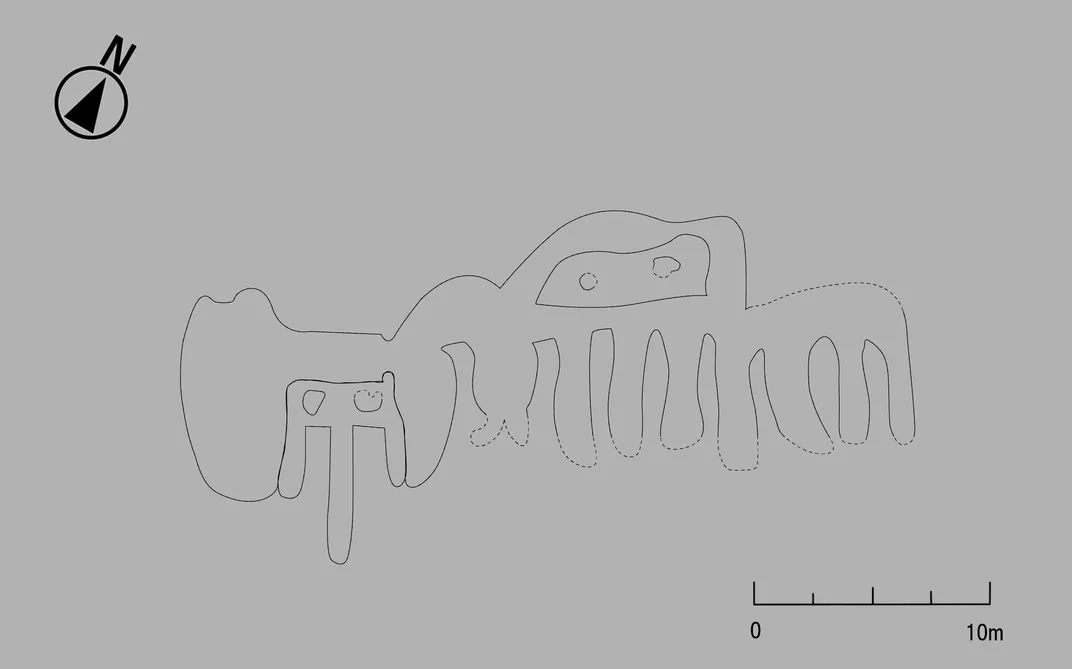“New” 2,000-Year-Old Geoglyph Spotted in Peru
There’s always more to learn about the mysterious Nazca lines
/https://tf-cmsv2-smithsonianmag-media.s3.amazonaws.com/filer/fe/5b/fe5ba306-024f-427a-b27d-0c35e70d57bd/cd201641901.jpg)
Easter Island has its iconic statues. England has Stonehenge. And Peru has its own mysterious modification to the landscape—the Nazca lines. The enormous geoglyphs were made in the desert ground around 2,000 years ago and have long been the subject of speculation. Now, Japanese researchers have discovered an entirely new geoglyph in Nazca, showing how much more there is to learn about the puzzling designs.
Masato Sakai and Jorge Olano of Yamagata University in Japan recently announced the discovery of the 98-foot-long geoglyph, which is thought to represent a mythical animal sticking out its tongue. Its makers seem to have forged it by removing stones with darker colors from the plateau surface to expose whitish ground below. They then piled up the stones to shape the image. It’s in the vicinity of another geoglyph the team discovered in 2011 that shows what they characterize as “a scene of decapitation.”
Imaginary animals and gory scenes may seem like strange things to encounter in the vast pampas of Peru, but they’re all part of the enigma of Nazca. Archaeologists now think that the lines were part of astronomical religious rituals enacted by the pre-Columbian Nazca culture, a group of ancient indigenous Peruvians who lived as farmers and warriors on the desert plains of Peru’s Rio Grande de Nasca. Since the pampas are so untouched by wind and rain, the lines they contain have remained relatively unscathed over thousands of years.

In a time before planes or satellites, the creation of thousands of geoglyphs that could only be fully appreciated from above was a leap of faith. But in the 1940s, archaeologists began to study the lines from the sky. The lines are now considered one of the world’s most impressive—and baffling—ancient feats.
Their symbolism continues into the 21st century, too: In 2014, they were irreparably damaged by Greenpeace activists looking to make a point about renewable energy. They may be co-opted by modern voices, but the Unesco-protected lines are a mute testament to a religion and culture that is largely lost.
But archaeologists are determined to find out as much as they can about the lines. As the Japan Times reports, Sakai’s team has already discovered over 100 “new” geoglyphs. The lines may be old, but there’s always more to learn.
/https://tf-cmsv2-smithsonianmag-media.s3.amazonaws.com/accounts/headshot/erin.png)
/https://tf-cmsv2-smithsonianmag-media.s3.amazonaws.com/accounts/headshot/erin.png)